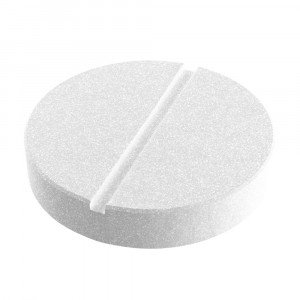 Welcome
Welcome
“May all be happy, may all be healed, may all be at peace and may no one ever suffer."
Aristopharma Ltd.
Vinton 5mg

Generic for Diseases
- Cerebrovascular disease
- Dementia
- Ischemic stroke
- Stroke
Vinpocetine increases cerebral metabolism; it increases glucose and O2 consumption; improves cerebral hypoxia tolerance; shifts glucose metabolism to the energetically more favourable aerobic pathway, but it increases the anaerobic pathway as well; it elevates the ATP concentration and the ATP/AMP ratio in the brain, and elevates the cerebral norepinephrine, dopamine and serotonin levels.
Vinpocetine considerably improves cerebral microcirculation by inhibiting platelet aggregation, reducing the pathologically increased blood viscosity, and increases erythrocyte deformability. It also promotes O2 transport into the tissues by reducing the O2 affinity of erythrocytes.
It selectively and intensely increases cerebral blood flow and the share of the brain in cardiac output, it reduces cerebral vascular resistance without affecting systemic circulation (blood pressure, heart rate, cardiac output, total peripheral resistance). It does not elicit steal phenomenon; on the contrary, it primarily improves the blood supply of the injured and ischaemic area while it remains unchanged in the intact areas (inverse steal effect). It further increases blood flow which is already increased as a result of hypoxia.
Acute Cerebro-Vascular Accidents (Strokes): Ischaemic strokes due to cerebral thrombosis, cerebral embolism, acute circulatory disorder, hypertensive crisis; the acute cardiovascular disorders, ischaemic neurological defcit, complete stroke (CS), multiinfarct dementia, cerebral arteriosclerosis, hypertensive encephalopathy, post-apoplectic conditions with the background of haemorrhagic strokes etc.
Senile Disorder: For relief of psychosomatic symptoms in the elderly due to cerebral insufciency eg. forgetfulness, memory disturbances, slow thinking, lack of concentration, dizziness, mood instability, aphasia, sleep disturbances, vasovegetative symptoms of menopausal syndrome etc.
Visual Disorder: Vascular disorders of the choroid and retina due to arteriosclerosis. Vasospasm, macula degenerations, arterial or venous thrombosis or embolism and glaucoma secondary to the above mentioned disorders.
Hearing Disorder: For the treatment of impaired hearing of vascular or toxic (iatrogenic) origin presbyacusis, meniere's disease, cochleovestibular neuritis, tinnitus and dizziness of labirynth origin.
Tablet: 1-2 tablets thrice daily, the maintenance dose is 1 tablet thrice daily.
IM Injection: Daily dose of 20-40 mg are to be given until improvement of symptoms is reached (for not longer than 10 days) then oral treatment should be applied. If this regimen fails, infusion treatment should be started.
IV Infusion: The daily starting dose is 20 mg in slow drip infusion (2 ampoules in 500-1000 ml infusion solution). This dose can be increased to 1 mg/kg body weight during 3 to 4 days. Treatment should be continued for 10-14 days depending on the tolerance of the patients and the dose should be gradually reduced before discontinuation of treatment.
Parenteral treatment- Severe ischaemic heart disease, severe rhythm disorders and pregnancy.
Transient hypotension, tachycardia may occur.
In the acute stage until the improvement of symptoms parenteral treatment is recommended followed by oral treatment. In chronic cases oral therapy should be applied.
Pregnancy & Lactation
In Pregnancy and Lactation the drug is contraindicated.
Vinton 5mg and more Available Brands
AZ 1%
Axon 500mg / vi...
Cilnipin 10mg
Musclex 50mg
Zofen TS 1.5mg
Aristobet-CL 0.1% + 1%
Aristophen 1%
Apuldon 5mg / ml
...
To be happy, beautiful, healthy, wealthy, hale and long-lived stay with DM3S.